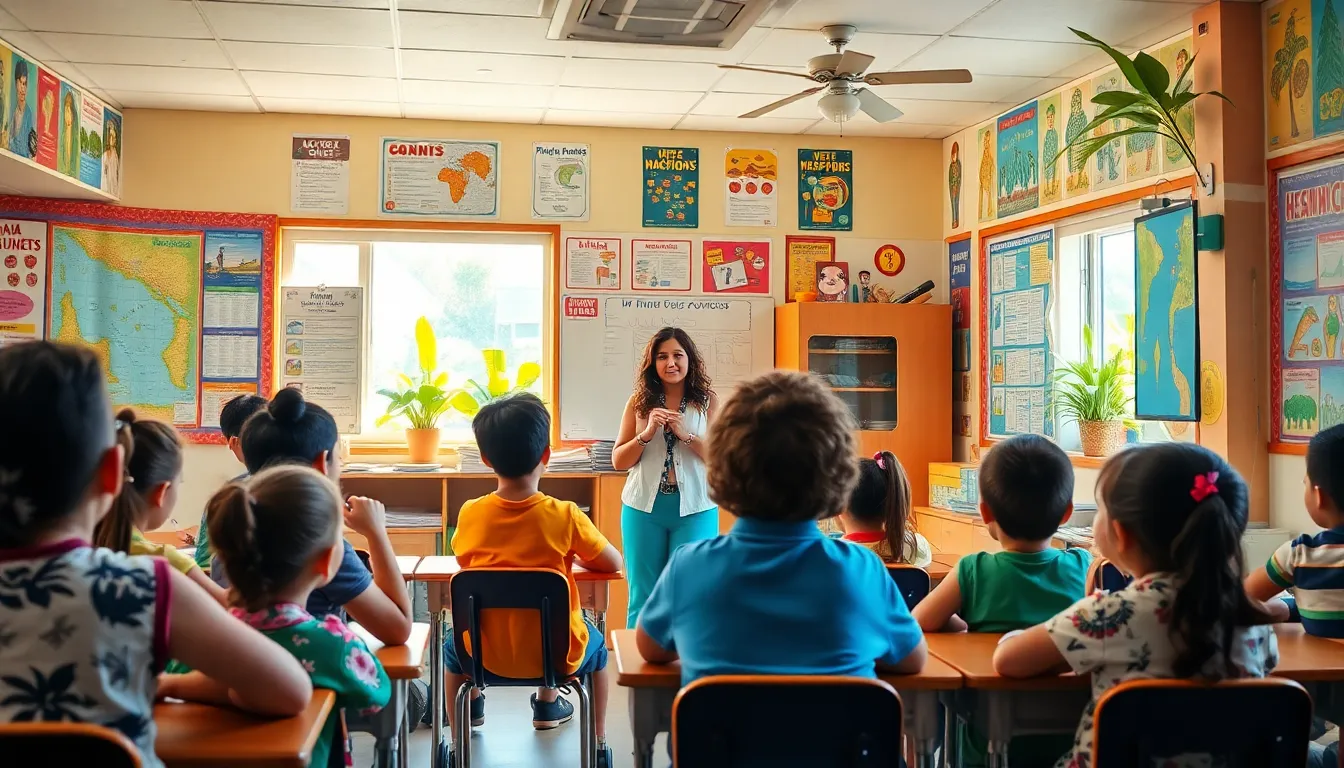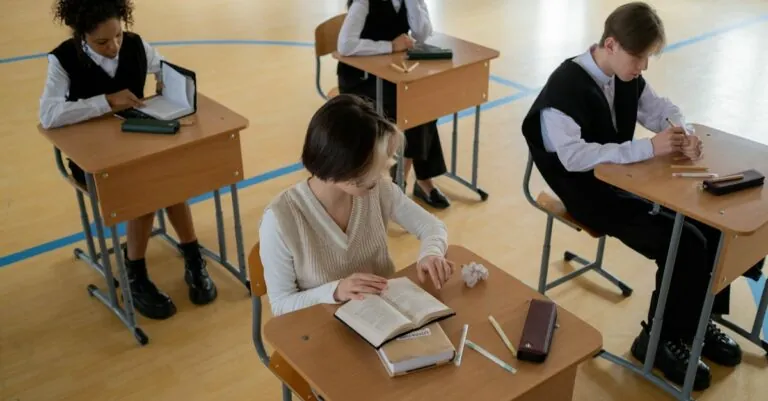As summer fades and the scent of fresh notebooks fills the air, parents and students alike are gearing up for another exciting school year in Hawaii. The 2024-2025 school calendar is packed with opportunities for learning, fun, and maybe a little bit of procrastination. After all, who wouldn’t want to plan their beach days around school breaks?
Table of Contents
ToggleOverview Of Hawaii School Calendar 24-25
The Hawaii school calendar for the 2024-2025 year features important dates that help families plan accordingly. With a blend of academic and holiday periods, the calendar ensures a well-rounded educational experience.
Key Dates And Holidays
Significant holidays include Labor Day on September 2, Thanksgiving break from November 28 to November 29, and Christmas break from December 23 to January 5. The spring break occurs from March 17 to March 21, providing students a chance to recharge. Other noteworthy dates include the statewide holidays, such as King Kamehameha Day on June 11. Not only do these breaks offer families quality time together, but they also enable students to engage in local cultural events.
Start And End Dates
The school year kicks off on August 5, giving students an opportunity to immerse themselves in academic pursuits. Classes conclude on May 30, marking the end of the school year. The first semester ends on December 20, while the second semester starts on January 6. Notably, this structure supports a balanced distribution of educational content, aiding in effective learning throughout the year.
School Year Breakdown

Hawaii’s 2024-2025 school year provides a structured calendar that balances education and leisure. Families can plan effectively around important dates.
Trimester System
The trimester system divides the school year into three distinct terms. Each trimester offers an opportunity for students to engage deeply with their subjects. In this structure, grades reflect progress over shorter periods, emphasizing continuous learning. The first trimester runs from August 5 to December 20. Students begin the new year with the second trimester from January 6 to March 21. The final trimester spans from March 24 to May 30, allowing for a smooth transition into summer activities.
Important Breaks
Several important breaks punctuate the school year, providing much-needed downtime. Labor Day marks the first significant break on September 2, giving families a chance to enjoy the long weekend. Thanksgiving break follows shortly, from November 28 to November 29, encouraging celebrations and family gatherings. Winter break offers a longer respite, lasting from December 23 to January 5. Spring break, scheduled from March 17 to March 21, allows students to recharge before returning for the final trimester. Each break supports both relaxation and family engagement in local events.
Implications For Families
The 2024-2025 school calendar affects various aspects of family life in Hawaii. Families can maximize their enjoyment of school breaks by planning activities early.
Planning Family Vacations
Planning family vacations around the school calendar allows for thoughtful scheduling. Notable breaks include Thanksgiving and spring breaks, providing opportunities for short trips. Families might consider local attractions during these periods to minimize travel stress. The extended winter break from December 23 to January 5 offers the chance to celebrate holidays together. Additionally, parents can take advantage of weekends before and after school breaks for longer getaways. Coordinating vacation plans with children’s academic schedules ensures seamless transitions between leisure and learning.
Adjusting Work Schedules
Adjusting work schedules becomes essential for families during the school year. Employers may allow flexible hours to accommodate school events or holidays. Many parents prefer to take leave during key breaks to focus on family activities. Utilizing personal days around important dates ensures quality time together. Flexibility in work commitments helps ease the burden of childcare and school transportation. Balanced planning allows families to engage more fully in their children’s education while maintaining a fulfilling work-life dynamic.
Educational Considerations
The 2024-2025 school year brings important educational implications for students and families in Hawaii. The updated curriculum focuses on enhancing student engagement through innovative teaching methods.
Curriculum Changes
New course offerings aim to reflect the interests and needs of students. Emphasis on STEM subjects generates excitement for hands-on learning experiences. Integration of cultural studies ensures that local heritage plays a significant role in education. Teachers adopt technology to foster interactive classrooms, allowing students to thrive in digital learning environments. Regular assessments provide feedback to track academic progress, ensuring that students stay on course for success.
Extracurricular Activities
Extracurricular programs play a vital role in student development. Opportunities for sports, arts, and community service allow students to explore their passions outside the classroom. Participation in these activities enhances teamwork and leadership skills. Schools encourage a variety of clubs, catering to diverse interests and fostering inclusivity. Families can benefit from these programs by engaging with school communities and building connections, enriching the overall educational experience.
The 2024-2025 school year in Hawaii promises to be an exciting time for students and families alike. With a well-structured calendar that balances academic rigor and ample breaks for relaxation and family activities, there’s plenty to look forward to.
As families prepare for the upcoming year, thoughtful planning around school holidays and events will enhance the educational experience. The integration of innovative teaching methods and diverse extracurricular offerings ensures that students will thrive both academically and personally.
By embracing the opportunities the school year presents, families can create lasting memories while supporting their children’s growth and development.




